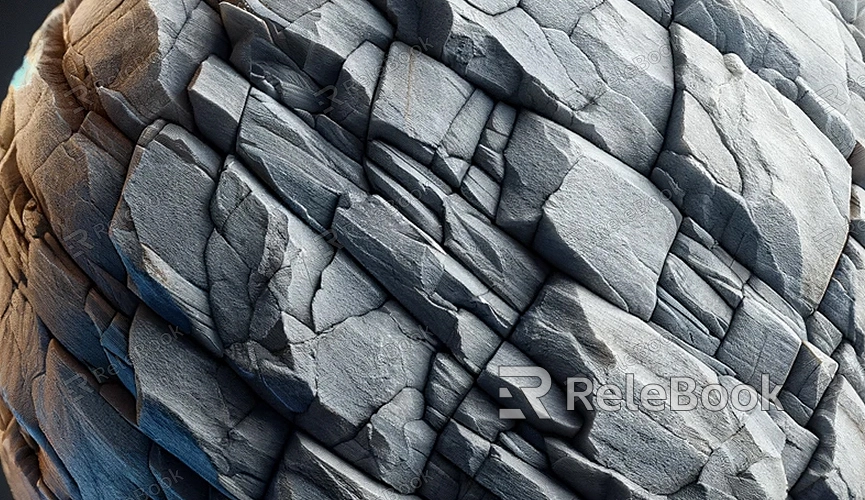Application of Cement Ground Texture in 3ds Max
Applying a cement ground texture in 3ds Max can bring realistic ground effects to your 3D scenes. When paired with suitable HDRI environmental lighting, it can better simulate the appearance of architectural surfaces like floors or walls. This texture can also be used to replicate the realistic effects of models in scenarios such as enclosed spaces. Here are some techniques for applying a cement ground texture in 3ds Max.

1. Obtain Cement Ground Texture:
First, ensure you have acquired a high-quality cement ground texture suitable for your scene. You can source textures from texture libraries, online resources, or create them using professional texture software. I recommend downloading high-quality cement ground textures or seamless cement textures directly from Relebook.
2. Create Material:
In 3ds Max, open your project file and go to the "Rendering" or "Material Editor" options. In the Material Editor, select an empty material slot and create a new material.
3. Import Texture:
In the Material Editor, find the "Diffuse Reflection" or "Color" channel and import your cement ground texture. You can import the texture by dragging the texture file into the respective channel or using a "Bitmap" node.
4. Adjust Texture Mapping:
Ensure the cement ground texture is correctly mapped to your ground model. You can adjust tiling and offset parameters in the Material Editor to make the texture fill the ground and achieve the desired effect.
5. Add Bump or Displacement:
To simulate the unevenness of a cement ground, you can add a grayscale map in the "Bump" or "Displacement" channel in the Material Editor to create a bump or displacement effect.
6. Set Material Properties:
Adjust other material properties, such as reflection, glossiness, and roughness, to ensure your cement ground looks realistic. Cement ground textures typically have some glossiness but may also have a subtle roughness.
7. Add Lighting:
In 3ds Max, proper lighting is essential for rendering realistic texture effects. Ensure your scene has appropriate light sources to highlight various details on the cement ground surface. It's advisable to download high-quality HDRI in advance from Relebook to simulate realistic lighting effects.
8. Render the Scene:
Finally, click the "Render" button on the 3ds Max interface to preview or generate the final image. By adjusting the camera, lighting, and other rendering settings, you can further optimize and fine-tune your cement ground texture effect.

